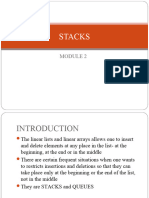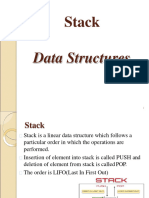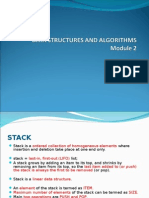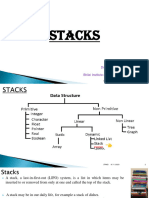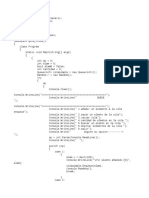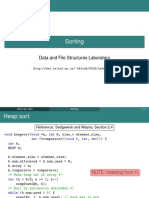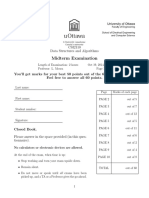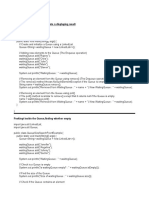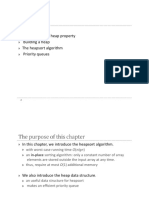0% found this document useful (0 votes)
20 views72 pagesStack and Queue
The document provides a comprehensive overview of stack data structures, including their properties, operations (PUSH and POP), and implementation using arrays. It discusses applications of stacks such as infix to postfix conversion, recursion, and depth-first search, along with algorithms for these operations. Additionally, it covers complexity analysis and valid stack permutations, along with examples of converting infix expressions to postfix and prefix forms.
Uploaded by
rohangupta102000Copyright
© © All Rights Reserved
We take content rights seriously. If you suspect this is your content, claim it here.
Available Formats
Download as PDF, TXT or read online on Scribd
0% found this document useful (0 votes)
20 views72 pagesStack and Queue
The document provides a comprehensive overview of stack data structures, including their properties, operations (PUSH and POP), and implementation using arrays. It discusses applications of stacks such as infix to postfix conversion, recursion, and depth-first search, along with algorithms for these operations. Additionally, it covers complexity analysis and valid stack permutations, along with examples of converting infix expressions to postfix and prefix forms.
Uploaded by
rohangupta102000Copyright
© © All Rights Reserved
We take content rights seriously. If you suspect this is your content, claim it here.
Available Formats
Download as PDF, TXT or read online on Scribd
/ 72














